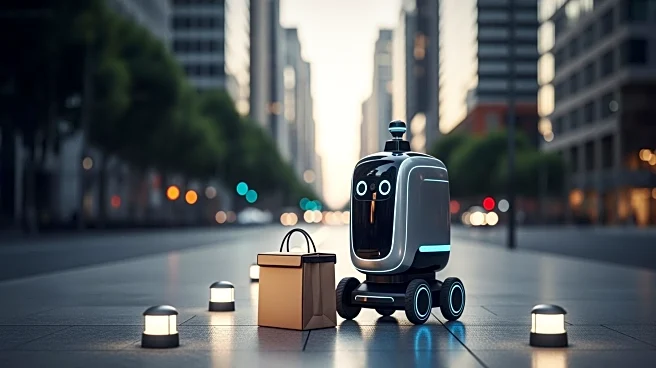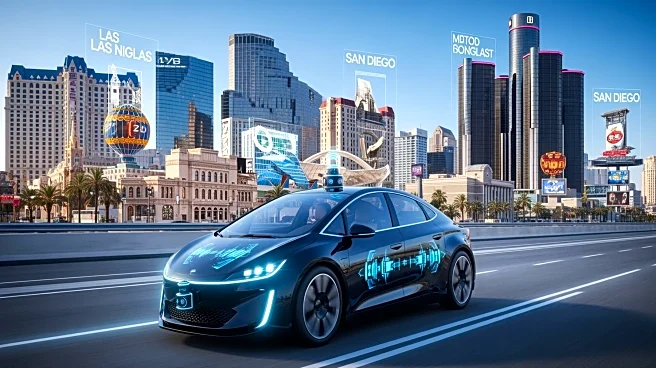What's Happening?
Grubhub has entered into a partnership with Avride to test delivery robots in Jersey City, following a successful deployment of 100 Avride robots on college campuses across North America. The initiative
aims to tackle urban delivery challenges, such as navigating mixed traffic and complying with local regulations. Avride's robots have been operating at The Ohio State University, completing up to 1,600 deliveries per day during peak periods. The partnership is part of Grubhub's strategy to enhance delivery experiences by integrating advanced robotics.
Why It's Important?
The collaboration between Grubhub and Avride represents a significant step towards sustainable and efficient delivery solutions. Autonomous delivery robots can reduce carbon emissions and improve safety by minimizing human error-related accidents. This technology could transform the meal delivery industry, which has seen a 160% increase since the COVID-19 pandemic. By lowering delivery costs, the initiative supports local restaurants and encourages more customers to use the service, potentially boosting the economy and reducing traffic congestion.
What's Next?
Avride plans to expand its delivery operations across urban environments and university campuses, with several new deployments scheduled. The company is also preparing to launch a robotaxi service in Dallas by December 2025. This expansion could lead to broader adoption of autonomous delivery technologies, influencing regulatory frameworks and public perception of robotic deliveries. Stakeholders, including local governments and businesses, may need to address infrastructure and policy adjustments to accommodate these innovations.
Beyond the Headlines
The rise of autonomous delivery robots raises ethical and legal questions about privacy, data security, and job displacement. As robots become more prevalent, there may be cultural shifts in how society perceives automation and its role in daily life. Long-term, this technology could redefine urban planning and transportation systems, necessitating new approaches to city design and public policy.











